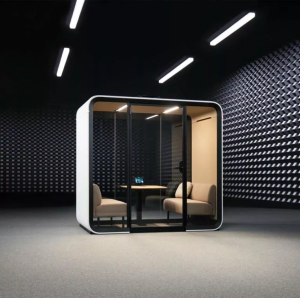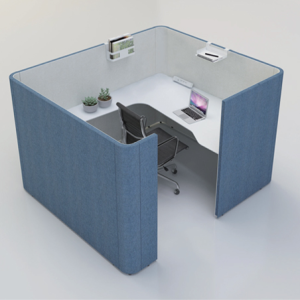Manufacturer-supplied monitor stands are often barebones, with limited viewing and ergonomic options (except for premium and gaming-branded models). If you utilise many monitors, changing your desk with a specialised stand is a simple way to improve your productivity. Before you start, one thing to note is to ensure that your monitor is VESA-compatible.
Your monitor must be VESA-compliant to use almost any third-party stand or mount. That means standard mounting holes are bored into the back of the monitor, usually directly into the steel frame, allowing any compatible mount to be put in.
VESA 100 (a square hole pattern 100mm wide on each side) is the standard, while certain super-sized monitors surpassing 35 inches may have higher requirements. Many smaller, less expensive, or thinner monitors tend not to be VESA-compatible and will only function with the manufacturer’s unique stands.
Other things to consider before choosing the right monitor arm are:
a) The number of monitors you use – single, dual, triple, etc.
b) Size of the monitors you use
c) Weight of your monitors
d) How you need the screens to be adjusted – horizontally, forward and back, vertically or tilted
e) Accompanying accessories – Laptop and tablet holders that attach to the monitor arm are becoming increasingly popular. Make sure your preferred option is compatible with the monitor arm.
Once these are out of the way, here are four monitor arm options for you to choose from:
1. Freestanding mount
The freestanding mount is merely a replacement for a typical monitor mound or stand; they attach to your monitor at the top and rest on your desk’s surface like a regular monitor mount or stand. However, upgrading your stand with a third-party one might give you a lot more options, such as a lot more height (ideally, the centre of the screen should be at or just below your eye level), panning and tilting, and even flipping the screen into a landscape adjustment.
Spring-loaded rising mechanisms and integrated cable management are available on more expensive versions, but the cheapest option is usually the best if you seek a freestanding mount. For as low as $30, you can get a single-monitor stand with all the above capabilities.
2. Side-clamp desk mount
A clamp-style mount, which secures the riser pole or arm to the side of the desk, is an intermediate alternative. This has the advantage of freeing up desk space directly beneath the display without requiring a permanent or semi-permanent installation. You’ll need a desktop that extends a few inches beyond the legs or support – most modern computer desks will suffice, but older types with a ‘boxy’ construction may not. The clamps are simple to install and just take a screwdriver and a little elbow grease to secure.
Side-clamp mounts can be very basic, consisting of simply a few pieces of steel, or complex, consisting of multi-jointed arms supported by tightened bolts or even gas-spring systems that hang the monitor over the desk and closer to your view. Some even feature pass-through connectors for USB and audio, among other things. If you’re handy with a few basic power tools, you can create one yourself.
3. Through-the-desk Grommet stand
A through-the-desk installation may be best for a semi-permanent attachment, which takes up minimal desk space. To secure the weight of both the stand and the monitor, these stands use a single, heavy-duty bolt that runs through a hole in the desk. Naturally, this restricts your options since you’ll either need to drill your own hole or have a desk with one already installed, such as a typical cable management grommet hole. Naturally, there’s no guarantee that they’ll be the optimum spot for your monitor mount.
Users who need to mount the most weight while having the least amount of desktop obstruction use through-the-desk stands. With through-the-desk mounts, double, triple, and quadruple monitor installations are prevalent. A regular bolt mount fixed to the desk, a clamp for the side of the desk, or a massive weighted plate that sits on the desk in a freestanding design to counterbalance the weight of many monitors are all options on some models. In single-monitor systems, they are relatively inexpensive, with more complicated ones costing more.
4. Wall mount
Users who desire a wholly unencumbered desk space and an attractive work area often use wall mounts. However, they require a lot of requirements due to their limited ergonomic positions, the need for a permanent installation on a wall (with a stud), and their unsuitability for most companies and rental buildings.
Conclusion
Choosing the right monitor arm may seem complicated at first, but the right one will make your workstation more ergonomic and comfortable to work at. Should you have any questions on the type of monitor arm suitable for your workspace and your budget, please don’t hesitate to get in touch with us here. Alternatively, browse our selections of monitor arms here.







